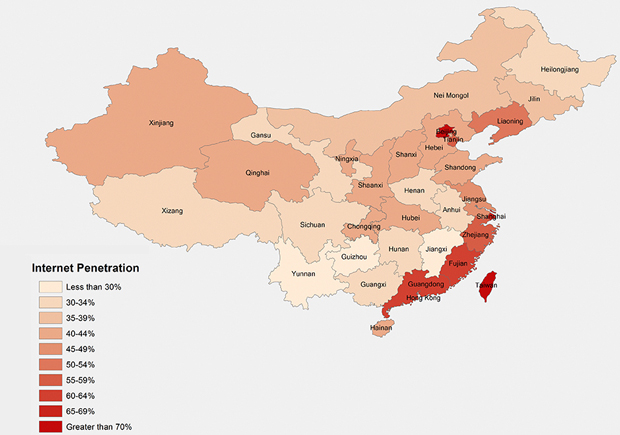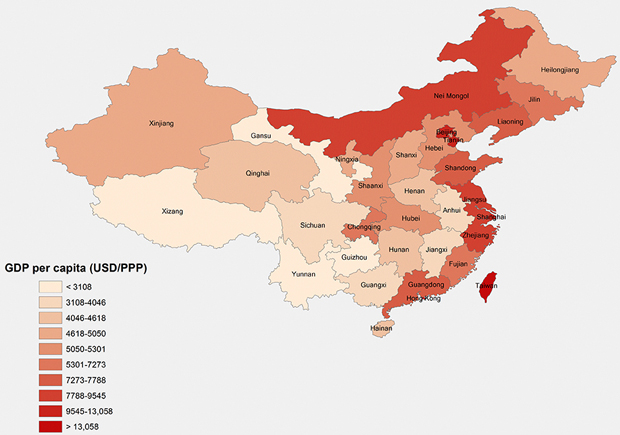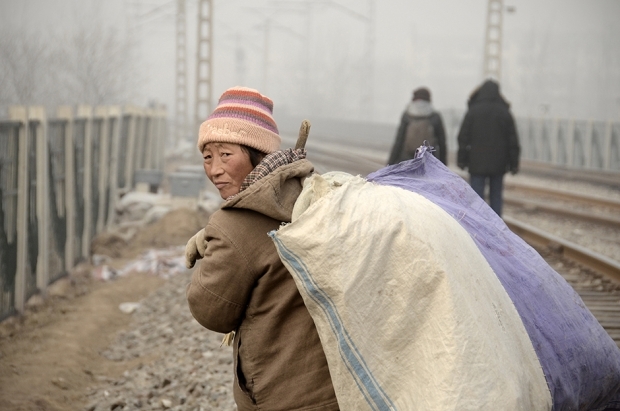On Friday, China’s National Bureau of Statistics announced that income inequality in the country exceeds a warning level set by the United Nations.
China’s publication of its Gini coefficient—a widely used measure of economic equity—drew attention for a number of reasons. For one, China has not published its Gini coefficient since 2000. More significantly, China’s figure of 0.47 exceeds a UN-established benchmark of 0.4, indicating an increased risk of social unrest.
But the recent release of another, less-heralded set of statistics underscores the challenges Beijing faces in spreading growth beyond the nation’s flush coastal provinces and gleaming metropolises.
Last Monday, the China Internet Network Information Center (CNNIC) published its annual report [in Chinese only here] on the nation’s Internet usage and infrastructure. According to the report, the Chinese Internet continues to boom, with usage swelling 10% to 564 million users in 2012. But the report also shows that the country’s Internet use—much like its economy—is highly uneven.
While web penetration in Beijing surpassed 72% in 2012, fewer than 30% of residents in the interior province of Jiangxi are Internet users. To put those figures in perspective, Beijing’s Internet usage is comparable to that of Hong Kong or Israel. Jiangxi, on the other hand, lags behind Uzbekistan, Bolivia, and Tuvalu.
In terms of the production of online content, the gap is even wider. Beijing-based websites host over 38 billion web pages, or an average of 1,890 pages per city resident. Tibetan-based sites host fewer than 3.5 million pages, or just over one page per person.
Tea Leaf Nation highlights some of the CNNIC findings in the maps below, which show that Internet penetration corresponds roughly with the level of economic development by region (with the notable exception of Inner Mongolia, a resource-rich but sparsely populated area).
Does this mean there are two Chinas? The Connected China, where residents are relatively wealthy, connected to the world of social media, and can access outside information despite government censorship, and the Disconnected China, where residents are relatively poor, still reliant on heavily regulated state-media for information, and closed off to new ideas?
One reason for optimism is that Internet penetration tends to grow with time and further development. According to the CNNIC report, twenty provinces saw double-digit growth in the number of Internet users in 2012, and provinces such as Ningxia, Anhui, and Guizhou are among the areas with the fastest growth.
Internet Penetration by Province

Source: CNNIC
GDP Per Capita by Province in 2011

Source: China Bureau of Statistics




